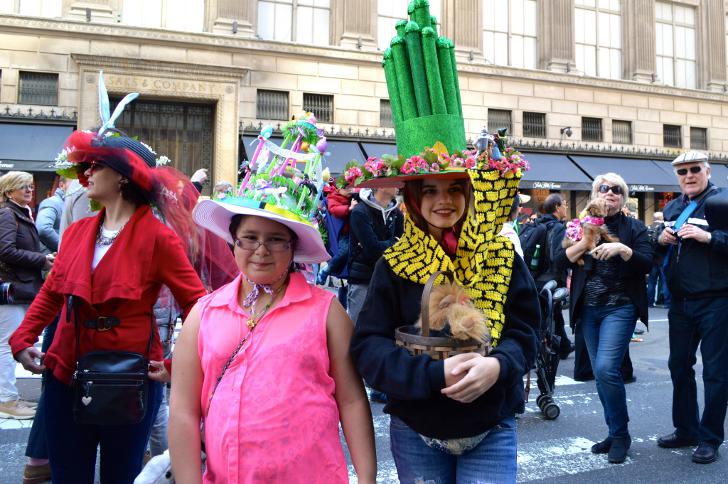New York City is home to many churches, both Catholic and Protestant. In the mid-19th century, a lot of churches (including St. Patrick’s Cathedral, Trinity Episcopal Church and St. Thomas’ Episcopal Church) began to decorate their sanctuaries with Easter flowers. The floral displays grew more elaborate each year and members of congregation began to dress accordingly for the Easter service.
By the 1880s, these traditions had transformed into an Easter parade. A vast spectacle for religious observance and fashion, it was an after-church cultural event for the upper class. Ladies and gentlemen in fashionable clothing would stroll along Fifth Avenue to see the floral displays. People from the middle and poorer classes could not participate but they came to watch the parade.
The annual procession was officially named the Easter parade around 1890. Although it was criticized by traditionalists for its display of wealth and beauty, it remained a highly anticipated event and was as important in retailing as the Christmas and holiday season is today. New York City’s Easter Parade became increasingly popular in the 1950s, drawing over a million people. By that time, its religious aspects had faded and the parade had transformed into a display of prosperity involving pranks, stunts and extravagant behavior.
Today’s New York Easter Parade is less large, popular and extravagant than it used to be. It is a mostly family friendly event involving New Yorkers of all ages and backgrounds in all kinds of outfits ranging from elegant to outrageous. Most revelers wear elaborately decorated Easter bonnets. The bonnets are the parade’s signature feature. That’s why it is sometimes referred to as the Easter Bonnet Festival. You can also see live pets, clowns, flowers, and more.
The parade takes place on Easter Sunday along Fifth Avenue from 49th to 57th streets, running from 10 am to 4 pm. One of the best places to observe the parade is the area around St. Patrick’s Cathedral. Although there are no floats or marching bands, the parade is a spectacle nonetheless.

Photo: Eugene Gannon




